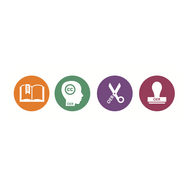
(View Complete Item Description)
Abstract
Arguing Through Writing is heavily adapted from the Lumen Learning English Composition 2 book on the SUNY OER list of texts. The textbook focuses on the writing process, as well as rhetorical modes. Emphasis is on the modes of causal analysis, argument, definition, and classification. MLA style and academic writing moves are featured. The textbook would be appropriate for either college-level Composition 1 or 2. The text features readings for each of the modes, as well as historical and contemporary texts in a reader section. The original version of this book was released under a CC-BY license and is copyright by Lumen Learning. It was then developed in March 2020 by Joshua Dickinson, Associate Professor of English at Jefferson Community College in Watertown, NY. The changes to this book listed are released under a CC-BY-SA license and are copyright by Joshua Dickinson of Jefferson Community College in Watertown, NY.
Description
Arguing Through Writing covers college-level writing, basic research, and argumentation with a combination of contemporary, historical, and classical writing models. The text focuses on classification, definition, causal analysis, and argumentation, working with these writing modes and pairing those with relevant texts. Several chapters are devoted to playing the writing game and knowing its moves. Visual arguments, MLA style, preparing annotated bibliographies, and film analysis are covered. The reader includes selections from Michel de Montaigne, Steven Pinker, H. G. Wells' history, Flannery O'Connor, Martin Luther King Jr., Ralph Waldo Emerson, Gordon Allport, and Stephen Leacock.
URI
http://hdl.handle.net/1951/71291
Material Type:
Assessment,
Textbook
Author:
Dickinson Joshua




















